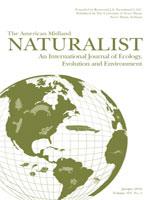Yegua Creek, a tributary of the Brazos River, Texas has yet to be comprehensively surveyed for freshwater mussels, despite previous studies documenting high mussel abundance and richness and the occurrence of Quadrula houstonensis, a federal candidate species under the U.S. Endangered Species Act. We qualitatively sampled mussels at 52 sites in lower Yegua Creek to assess the status of mussel populations and provide a baseline for future monitoring efforts. In total 10,010 mussels representing 16 species were observed, including Q. houstonensis and Truncilla macrodon, which is also a federal candidate species. Mussel species richness and abundance increased with distance downstream from Lake Somerville, which corresponded with changes in assemblage structure. Recruitment was lowest near Lake Somerville and highest in reaches located in the middle sections of the study area. Taken together these results indicate that Lake Somerville may be negatively impacting the mussel fauna in Yegua Creek. Despite these impacts, mussel abundance and diversity is high in reaches located at intermediate distances from the reservoir and represents some of the largest known populations in central Texas.
How to translate text using browser tools
1 January 2016
Structural Changes in Freshwater Mussel (Bivalvia: Unionidae) Assemblages Downstream of Lake Somerville, Texas
Eric T. Tsakiris,
Charles R. Randklev
ACCESS THE FULL ARTICLE
It is not available for individual sale.
This article is only available to subscribers.
It is not available for individual sale.
It is not available for individual sale.





